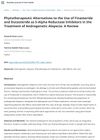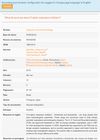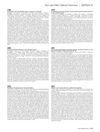TLDR The treatment improved hair growth and was well-received without side effects.
This pilot study explored the use of a 6% dutasteride gel applied through skin patting and iontophoresis in 20 adults with treatment-resistant androgenetic alopecia. The results showed significant improvements in hair density, shaft diameter, and reduced hair shedding, with 70% of participants finding the treatment effective and 85% describing it as pleasant. No adverse events were reported. The study indicates that this method enhances local anti-androgen effects while minimizing systemic exposure. However, limitations include the small sample size, open-label design, lack of a comparator arm, short follow-up, and non-validated outcome measures, necessitating larger randomized trials for confirmation.
January 2024 in “Italian Journal of Dermatology and Venereology”  2 citations
,
July 2023 in “Journal of Cosmetic Dermatology”
2 citations
,
July 2023 in “Journal of Cosmetic Dermatology” The topical treatment reduced hair loss and improved hair growth in patients with certain types of hair loss.
17 citations
,
November 2021 in “Journal of Cosmetic Dermatology” Combination therapies for androgenetic alopecia work best but can have significant side effects and costs.
1 citations
,
May 2021 in “Dermatology practical & conceptual” Iontophoresis with growth factors safely and effectively promotes hair regrowth without discomfort.
 January 2024 in “Brazilian Journal of Hair Health”
January 2024 in “Brazilian Journal of Hair Health” Some plant-based products might treat hair loss with fewer side effects than current medications.
 June 2023 in “Clinica Chimica Acta”
June 2023 in “Clinica Chimica Acta” Finasteride and dutasteride effectively reduce DHT in hair, which may help evaluate their treatment success for hair loss.
 January 2018 in “Surgical and Cosmetic Dermatology”
January 2018 in “Surgical and Cosmetic Dermatology” 5-alpha reductase inhibitors like finasteride and dutasteride are effective for treating enlarged prostate and male pattern hair loss.
 27 citations
,
March 2017 in “Current Clinical Pharmacology”
27 citations
,
March 2017 in “Current Clinical Pharmacology” Dutasteride is becoming a popular hair loss treatment, proving more effective than finasteride with similar side effects.
 August 2016 in “Journal of Investigative Dermatology” April 2013 in “The FASEB Journal”
August 2016 in “Journal of Investigative Dermatology” April 2013 in “The FASEB Journal” Dutasteride showed some prevention of prostate issues but also had limitations, especially with high-grade tumors.






